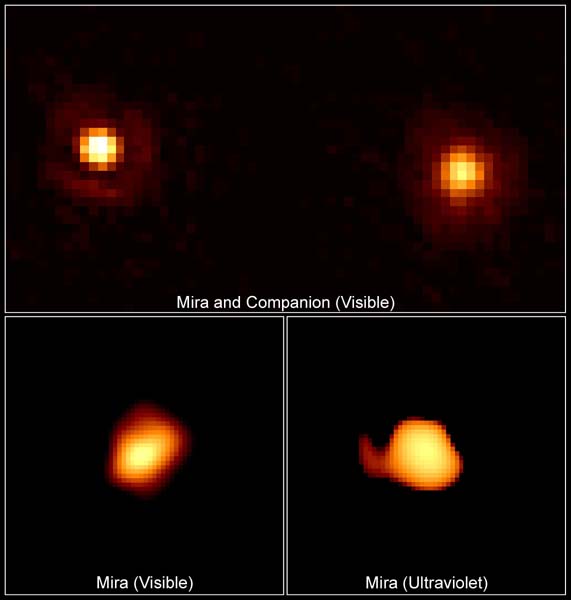 This is the Web Edition of "A Trip Into Space", a Coimbra-based electronic book on space science. Both the texts and the photos are by courtesy of National Aeronautics and Space Administration.
This is the Web Edition of "A Trip Into Space", a Coimbra-based electronic book on space science. Both the texts and the photos are by courtesy of National Aeronautics and Space Administration.
 This is the Web Edition of "A Trip Into Space", a Coimbra-based electronic book on space science. Both the texts and the photos are by courtesy of National Aeronautics and Space Administration. This is the Web Edition of "A Trip Into Space", a Coimbra-based electronic book on space science. Both the texts and the photos are by courtesy of National Aeronautics and Space Administration.
|
A Trip Into Space  Stars And Other Fascinating Objects Stars And Other Fascinating Objects  Mira - Hst Separates Stars In The Mira Binary System Mira - Hst Separates Stars In The Mira Binary System |
|
  |
[TOP] This is a NASA Hubble Space Telescope image of the cool red giant star Mira A (right), officially called Omicron Ceti in the constellation Cetus, and its nearby hot companion (left) taken on December 11, 1995 in visible light using the European Space Agency's Faint Object Camera (FOC). The stars in this false-color picture are separated by an angular size of only 0.6 arcseconds (equal to 70 times the distance between Earth and the Sun), but clearly resolved by the FOC. Image reconstruction techniques have been used to further enhance the details in the Mira images.
In the lower two panels the reconstructed images of Mira are magnified and the companion is out of the field of view to the left from Mira.
[LOWER LEFT] Hubble's visible-light image of the disk of Mira reveals it has an odd, asymmetrical shape resembling a football. This may be tied to dramatic changes occurring during its expansion-contraction cycles, or to the presence of unresolved spots on its surface. Hubble measurements show the red giant star is 700 times larger than our Sun.
[LOWER RIGHT] In UV light, Hubble resolves a small hook-like appendage extending from Mira, in the direction of the companion that could be material from Mira being gravitationally drawn toward the smaller star. Alternately, it could be that material in Mira's upper atmosphere is being heated due to the companion's presence.
In this magnified image of Mira, displayed on a log scale to show better the extension toward the companion, the companion is out of the field of view - to the left of Mira.
PHOTO CREDIT: Margarita Karovska (Harvard-Smithsonian Center for Astrophysics), and NASA

Last Update: 2004-Nov-27